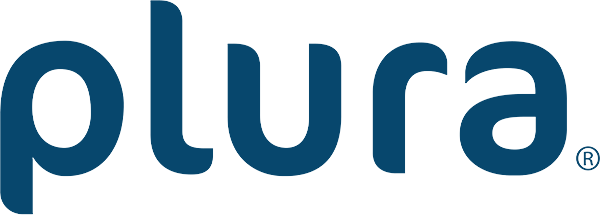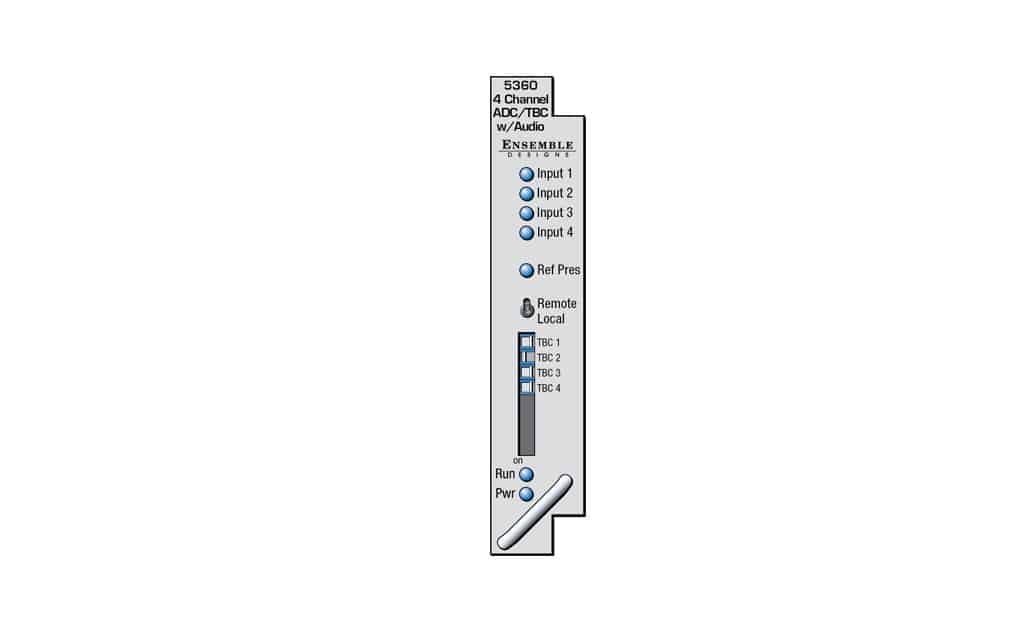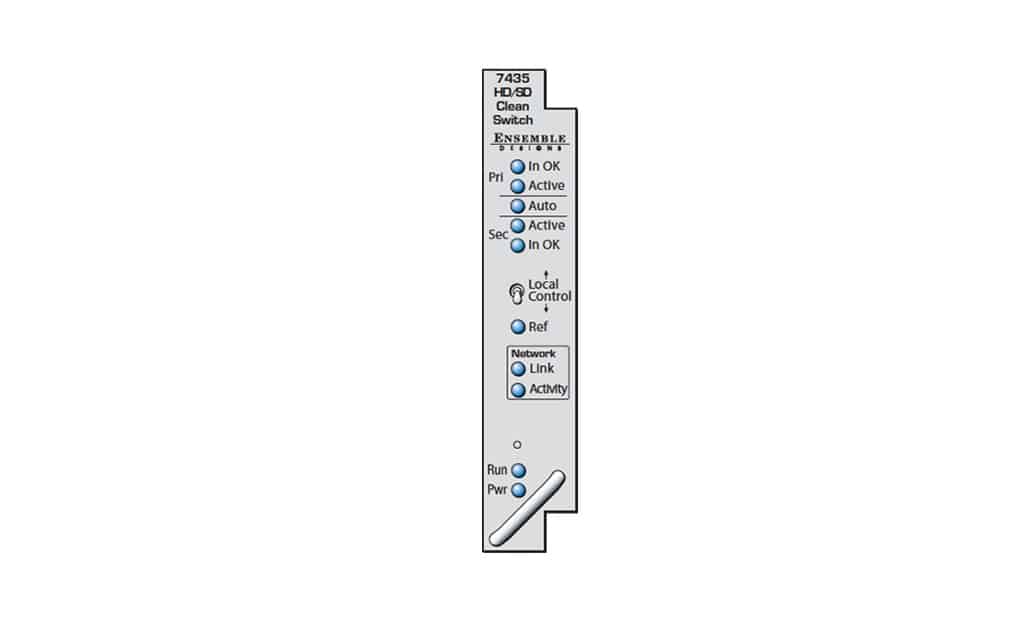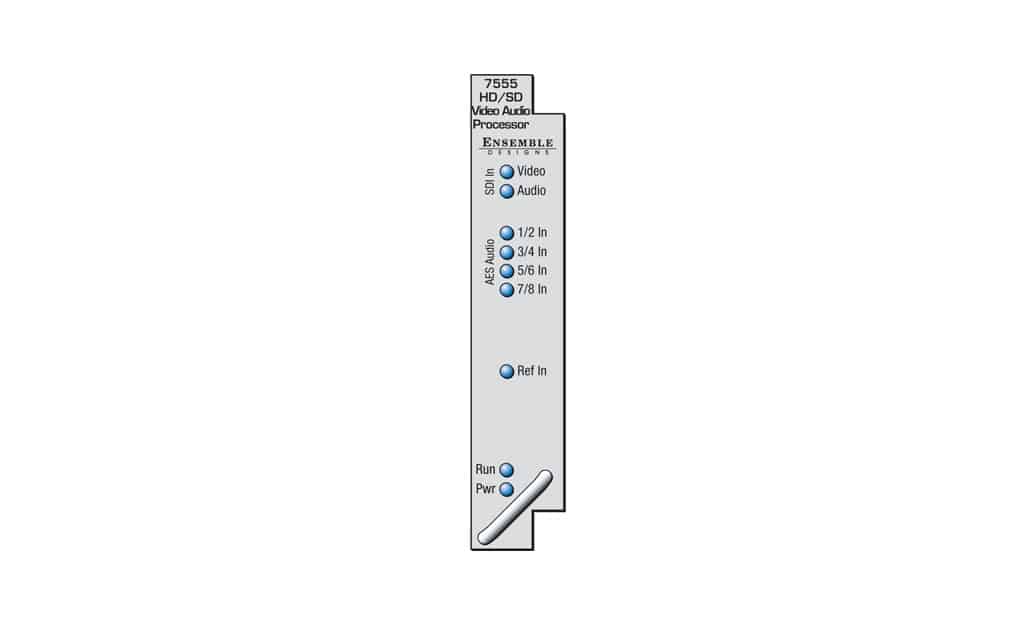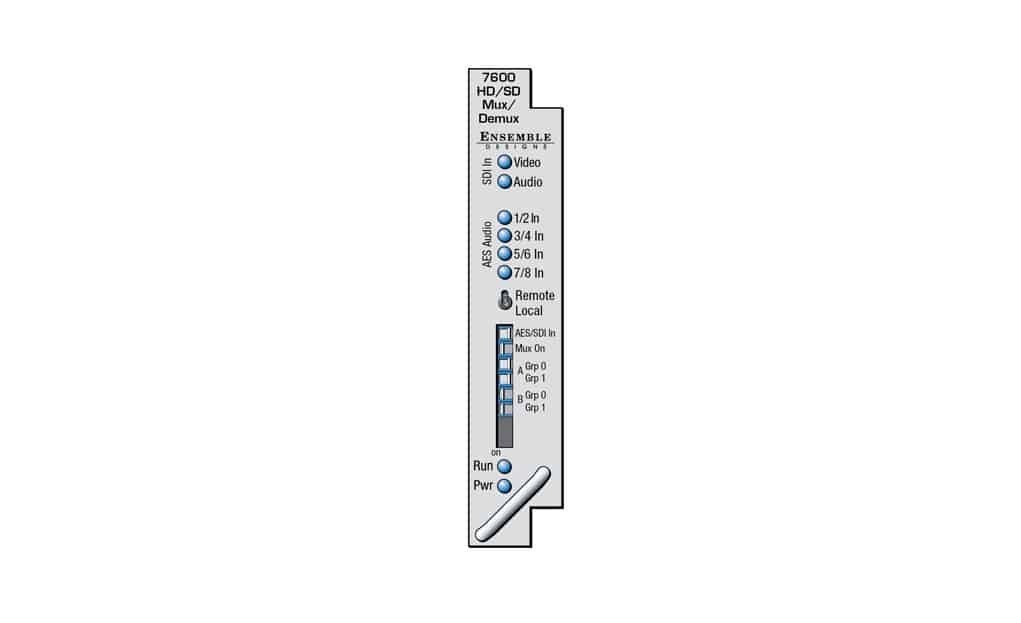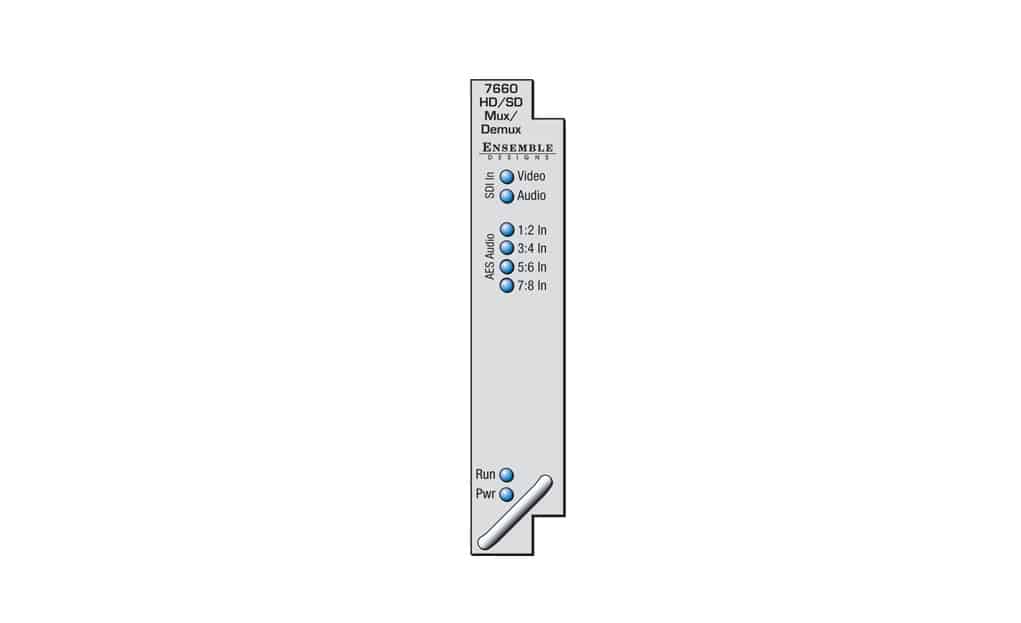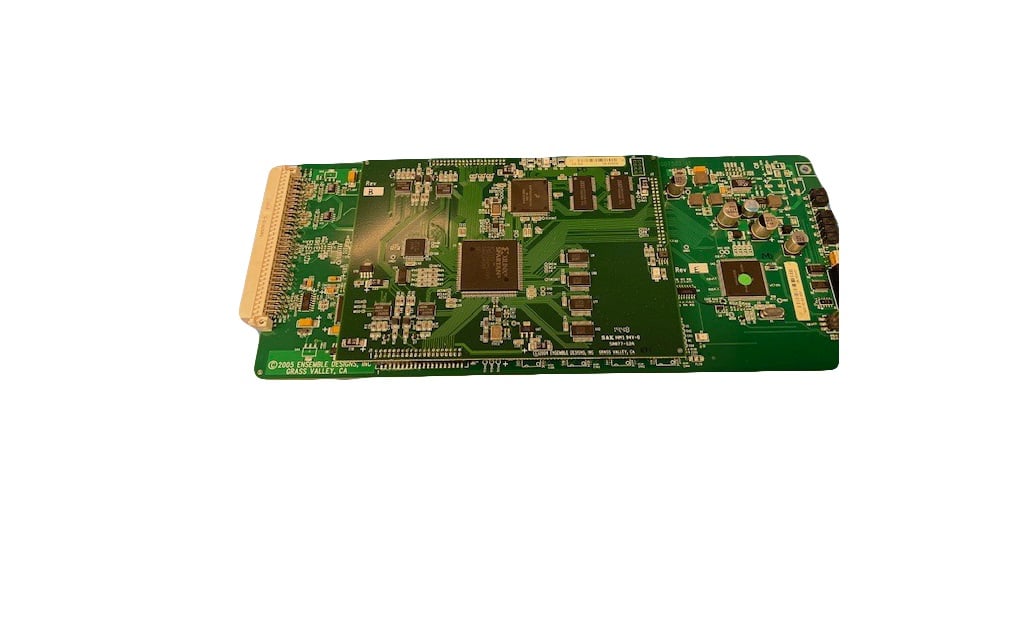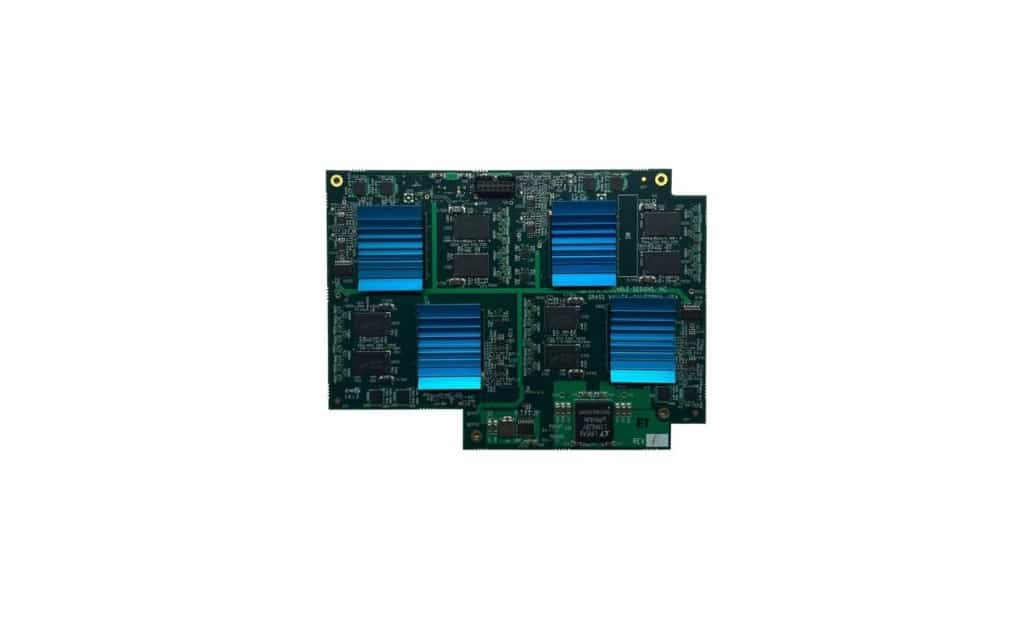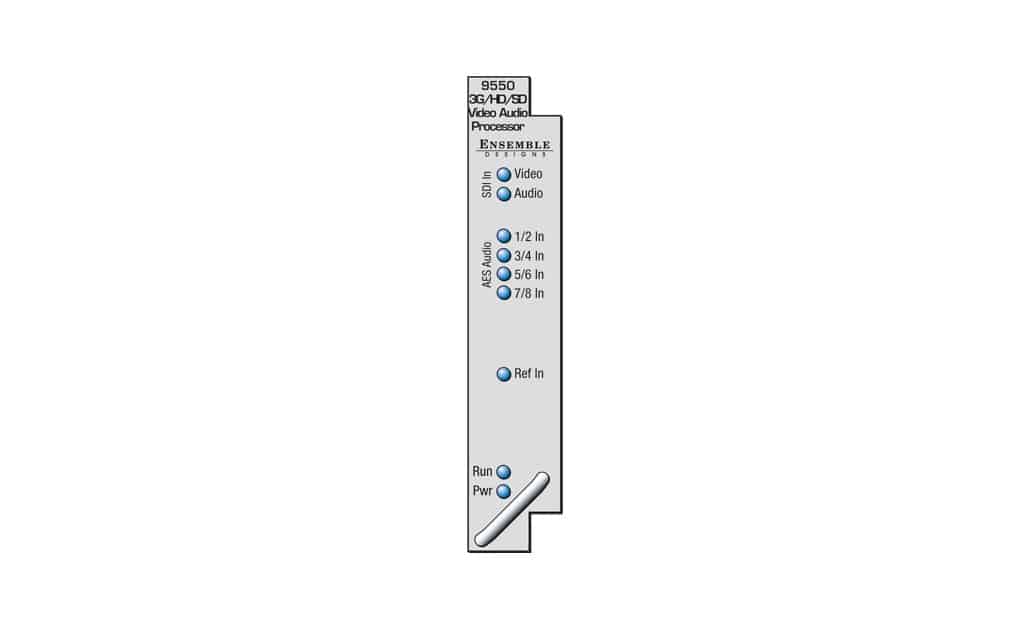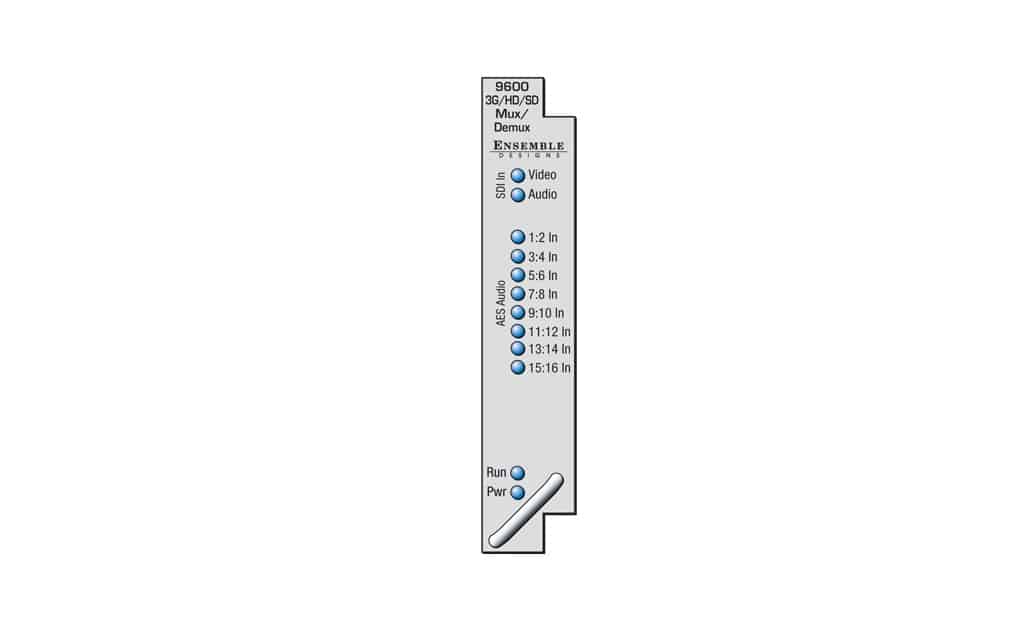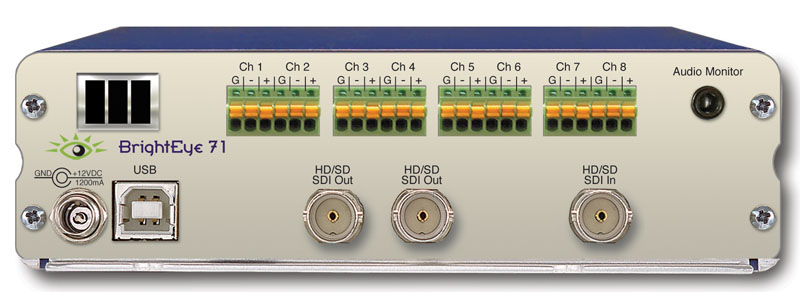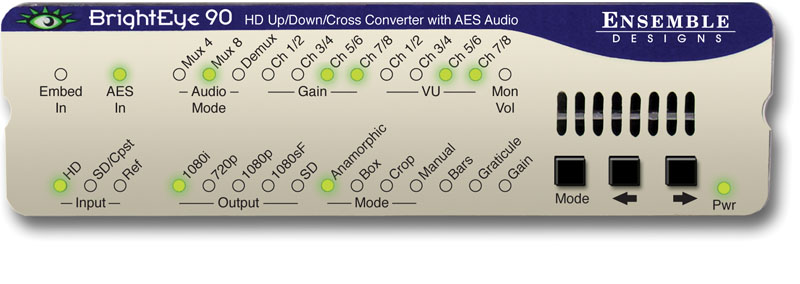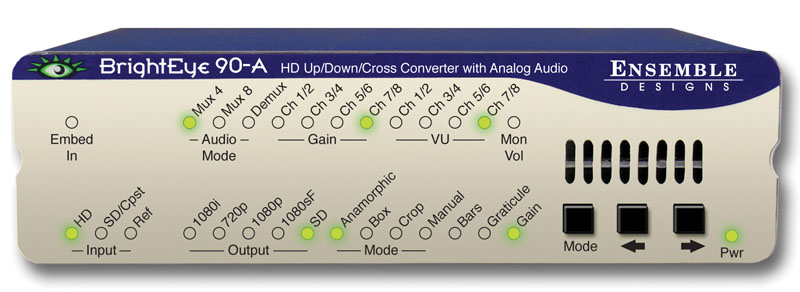
Signal Processing
Best-in-class “glue” products tying media system together.
Flexible, frame-based and compact signal processing products for video facilities includes modules for video up/down conversion, audio embedding, synchronization, conversion, routing, noise reduction, protection switches, test signal generators and more. We support IP-2110 / 4K / UHD / FHD Video, MPEG, Analog Video and Audio processing.
Product Filters See 9 moreSee lessSee 8 moreSee lessSee 5 moreSee lessSee 4 moreSee lessSee 4 moreSee less
Series
Avenue(9)
BrightEye(9)
Form-Factor
Modular Card(9)
Stand Alone System(9)
Video Input
4K/UHD SDI(0)
3G HD SDI(2)
HD SDI(12)
SD SDI(13)
Fiber Optic(0)
HDMI(2)
HDMI HDCP(0)
DVI(2)
VGA(2)
ASI(0)
SMPTE 310M(0)
Analog Component(0)
Analog Composite(5)
Video Output
4K/UHD(0)
3G HD SDI(3)
HD SDI(12)
SD SDI(14)
Fiber Optic(3)
HDMI(4)
HDMI HDCP(0)
ASI(0)
SMPTE 310M(0)
Analog Component(0)
HD Analog Component(0)
Analog Composite(6)
Video Processing
Aspect Ratio Conversion(4)
Cross Conversion(4)
Downconversion(4)
Legalization(1)
Protection Switch(1)
Reference In/Timeable Output(10)
Scan Conversion(2)
TBC/Frame Sync(8)
Upconversion(4)
Audio Features
Adjustable Delay(8)
AES(13)
AGC(4)
Analog Audio(11)
Disembedder(15)
Dolby E(6)
Embedder(18)
Mix & Shuffle(0)
Sync Pulse/Test Signal
Analog(0)
SD SDI(0)
Tri-Level Sync(0)
3G HD SDI(0)
4K/UHD SDI(0)
GPS(0)
HD SDI(0)
Time Code(0)
